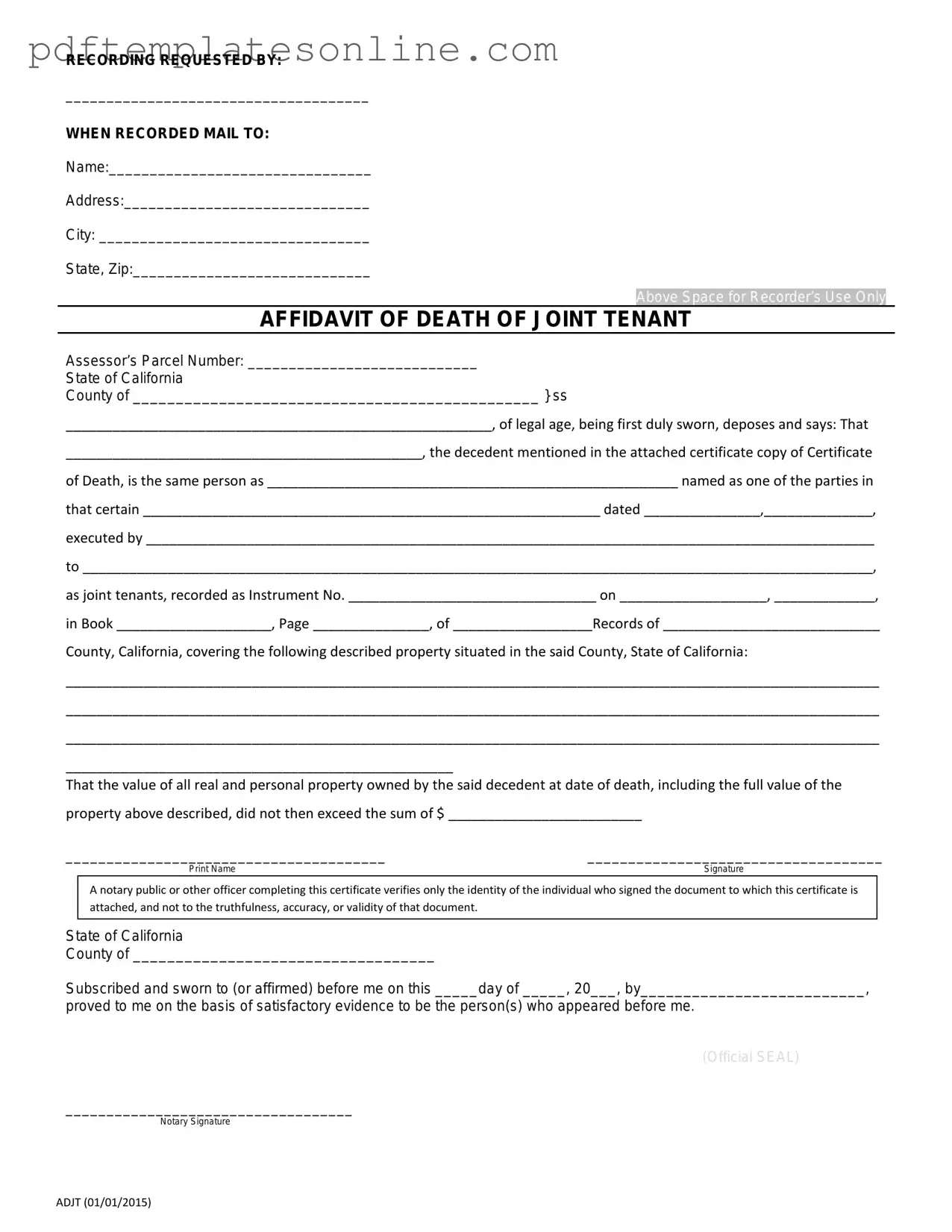Filling out the California Death of a Joint Tenant Affidavit form can be a straightforward process, but many people encounter common pitfalls that can complicate matters. One frequent mistake is not providing accurate information about the deceased joint tenant. This includes failing to include the correct name, date of birth, or date of death. Such inaccuracies can lead to delays in the transfer of property and may even require additional documentation.
Another common error is neglecting to sign the affidavit. A signature is crucial for the affidavit to be considered valid. Without it, the form may be rejected by the county recorder's office. Additionally, some individuals forget to have the affidavit notarized. In California, notarization is often required to ensure the authenticity of the document. Skipping this step can result in the form being deemed incomplete.
People sometimes overlook the importance of including all necessary supporting documents. For instance, a death certificate must typically accompany the affidavit. Failing to attach this essential document can lead to complications and prolong the process of transferring property ownership.
Another mistake involves misunderstanding the role of joint tenancy. Some individuals mistakenly believe that joint tenancy automatically transfers property without any documentation. While it does simplify the transfer process, an affidavit is still necessary to formalize the change in ownership. Ignoring this requirement can lead to confusion and potential disputes among heirs.
Inaccurate descriptions of the property can also cause issues. The affidavit should clearly identify the property in question, including its legal description. Omitting this information or providing vague details can create confusion and hinder the transfer process.
People often fail to check for any outstanding debts or liens against the property. If there are existing financial obligations, these may need to be addressed before the property can be transferred. Ignoring this aspect can lead to complications that affect the heirs’ ability to take full ownership.
Another mistake is not being aware of the local requirements for filing the affidavit. Different counties may have specific rules or additional forms that need to be submitted. Failing to research these local requirements can result in delays or rejections.
Additionally, individuals sometimes underestimate the importance of keeping copies of all submitted documents. It’s wise to maintain a record of the affidavit and any supporting materials. Without these copies, it can be challenging to resolve any issues that may arise later.
Lastly, some people rush through the process, leading to careless errors. Taking the time to carefully review each section of the affidavit can prevent mistakes that might otherwise cause delays. Patience and attention to detail are key when completing this important document.
